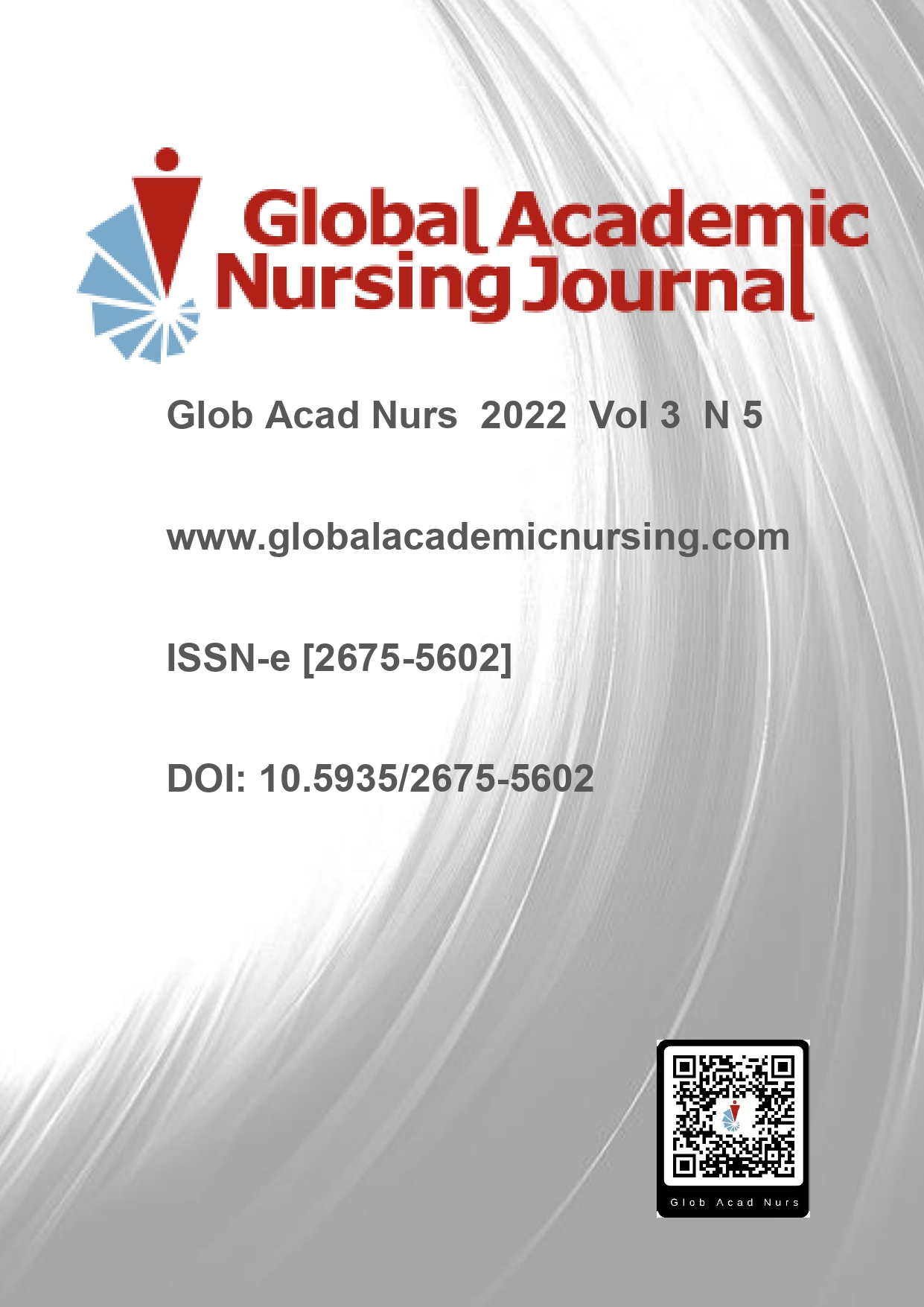Abstract
It was aimed to highlight and identify the main complications after infection by COVID-19 reported in the scientific literature. It is an integrative review of the literature. To achieve scientific production on the chosen theme, the Virtual Health Library (BVS) and the Databases: Medical Literature Analysis and Retrieval System Online (Medline), Latin American and Caribbean in the Caribbean in the search was used as a search. Health Sciences (Lilacs) and Pubmed. A total of 30 articles was obtained. After application of the inclusion and exclusion, reading and analysis criteria of the studies, 10 articles were reached for the construction of this review. Studies showed cardiovascular, renal, neurological, respiratory, liver, hematological, metabolic, functional and psychological complications. These include: ischemic injury of myocardial, pericarditis, renal failure, hematuria, proteinuria, stroke, yearsia, bronchopneumonia, bronchial mucosal edema, alterations in liver enzymes, venous thromboembolism, metabolic disorders, functional and psychological impairment. It is concluded that COVID-19 has high relevance during the appearance and development of its complications. We do not yet know how long these complications can reach patients if sequelae are temporary or definitive. Thus, the Unified Health System is prepared to continue watching these individuals.
References
Soares HF. O avanço da COVID-19 e o isolamento social como estratégia para redução da vulnerabilidade. Espaço e Economia; 2020;IX(17). https://doi.org/10.4000/espacoeconomia.11357
World Health Organization (WHO). Pandemia-COVID-19 [Internet]. 2021 [acesso em 15 nov 2021]. Disponível em: https://www.paho.org/pt/news/11-3-2020-who-characterizes-COVID-19-pandemic
Ministério da Saúde (BR). Coronavírus. Como é transmitido? [Internet]. Ministério da Saúde; 2021 [acesso em 15 nov 2021]. Disponível em: https://www.gov.br/saude/pt-br/coronavirus/como-e-transmitido
Cavalcante JRA, Lopes AJ. COVID-19 no município do Rio de Janeiro: Análise Espacial da Ocorrência dos Primeiros Casos e Óbitos Confirmados. Epidemiológia e Serviços de Saúde. 2020;22(3). https://doi.org/10.5123/S1679-49742020000300007
Zhang C, Shi L, Wang FS. Lesão hepática em COVID-19: manejo e desafios. Lancet Gastroenterol Hepatol. 2020;5:428-30. https://doi.org/10.1016/S2468-1253
Fellet J. COVID-19 não pode ser pensada só como doença respiratória [Internet]. BBC News Brasil; 2020 [acesso em 14 out 2021]. Disponível em: https://www.bbc.com/portuguese/geral-52672009
Souza MT, Silva MD, Carvalho R. Integrative Review: Whatis It? How To Do It? Einstein (São Paulo). 2010;8(1):102–106. https://doi.org/10.1590/S1679-45082010RW1134
Santos CMDC, Pimenta CADM, Nobre MRC. A Estratégia PICO para a Construção da Pergunta de Pesquisa e Busca de Evidências. Rev. Latino-Am.Enfermagem. 2007.;15(3) https://doi.org/10.1590/S0104-11692007000300023
Moher D, Liberati A, Tetzlaff J, Altman DG, Altman D, Antes G et al. Itens de Relatório Preferidos para Revisões Sistemáticas e Meta-Análises: A Declaração PRISMA. Epidemiol. Serv. Saúde. 2015;24(2). https://doi.org/10.5123/S1679-49742015000200017
Bellan M, et al. Respiratory and Psychophysical Sequelae Among PatientsWith COVID-19 Four Months After Hospital Discharge. Jama Netw Open [Internet]. 2021 [acesso em 28 out 2021]. Disponível em: https://jamanetwork.com/journals/jamanetworkopen/article-abstract/2775643
Tuason T, Güss CD, Boyd L. Thriving During COVID-19: Predictors Of Psychological Well-being and ways of coping. Plos One. 2021. https://doi.org/10.1371/journal.pone.0248591
Yekedüz E, et al. Clinical Course of COVID-19 infection in elderlypatientwith melanoma onnivolumab. J Oncol Pharm Pract [Internet]. 2021 [acesso em 10 nov 2021];26(5):1289-1294. Disponível em: https://journals.sagepub.com/doi/10.1177/1078155220924084
Ayoubkhani D, et al. Post-COVID Syndrome in Individual Sadmittedto Hospital With COVID-19: Retrospective Cohort Study. The BMJ [Internet]. 2021 [acesso em 23 out 2021];372(693). Disponível em: https://www.bmj.com/content/372/bmj.n693.long
Buja LM, et al. The Emergings Pectrumof Cardio-Pulmonary Pathology of the Coronavirus Disease 2019 (COVID-19): Report of 3 autopsies from Houston, Texas, and Review of autopsyfindings from other United States cities. Elsevier Cardiovasc Pathol [Internet]. 2021 [acesso em 23 out 2021]. Disponível em: https://www.sciencedirect.com/science/article/pii/S1054880720300375?via%3Dihub
Fraser E. Persistent Pulmonary Disease After Acute COVID-19. The BMJ. 2021;373(1565). https://doi.org/10.1136/bmj.n1565
Wu X, et al. 3-Month, 6-month, 9-month, and 12-month respiratoryoutcomes in patientsfollowing COVID-19-related hospitalisation: a prospectivestudy. The Lancet - Respiratory Medicine. 2021;2600(21)00174-0. https://10.1016/S2213-2600(21)00174-0
Studart-Neto A, et al. Neurological Consultation and diagnoses in a large, dedicated COVID-19 university hospital. Arq. Neuropsiquiatr. 2020;78(8). https://doi.org/10.1590/0004-282X20200089
Wadhera RK, et al. Racial and Ethnic Disparities in Heart and Cerebrovascular Disease Deaths Duringthe COVID-19 Pandemic in the United States. Circulation [Internet]. 2021 [acesso em 03 nov 2021];143:2346–2354. Disponível em: https://www.ahajournals.org/doi/10.1161/CIRCULATIONAHA.121.054378
Pan Y, Yan J, Lu W, Shan M. Sub-Health Status SurveyandInfluential Factor Analysis in Chinese duringCoronavirusDisease 2019 Pandemic. J Korean Acad Nurs [Internet]. 2021 [acesso em 15 nov 2021];51(1):5-14 Disponível em: https://jkan.or.kr/DOIx.php?id=10.4040/jkan.20241
Freitas RJM, Moura NA, Teixeira LA, Fernandes APNL, Monteiro ARM. Panorama das publicações em saúde mental no contexto da pandemia por COVID-19: scoping review. Glob Acad Nurs. 2021;2(1):e84. https://dx.doi.org/10.5935/2675-5602.20200084
Lentz GNS, Batista EA, Zanon J, Silva LF. As implicações emocionais na saúde dos enfermeiros durante a pandemia do SARS-CoV-2. Glob Acad Nurs. 2021;2(1):e80. https://dx.doi.org/10.5935/2675-5602.20200080

This work is licensed under a Creative Commons Attribution-NonCommercial-NoDerivatives 4.0 International License.
Copyright (c) 2022 Global Academic Nursing Journal

